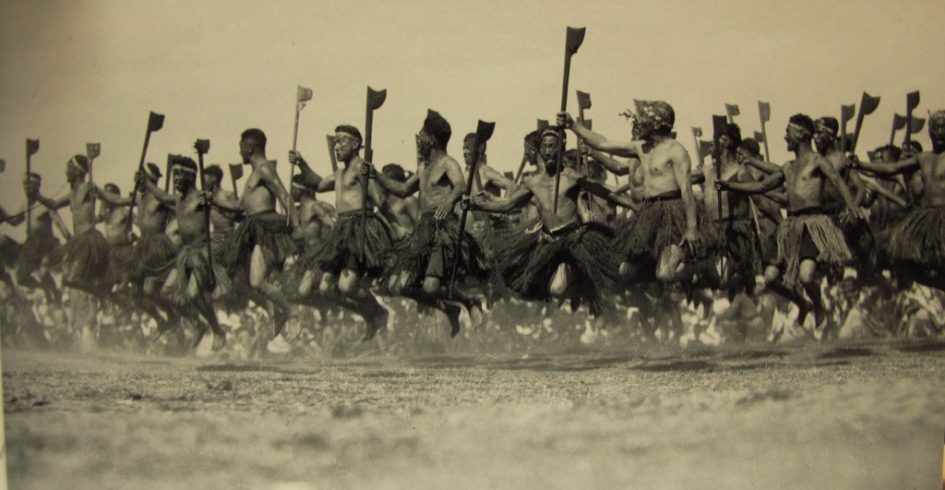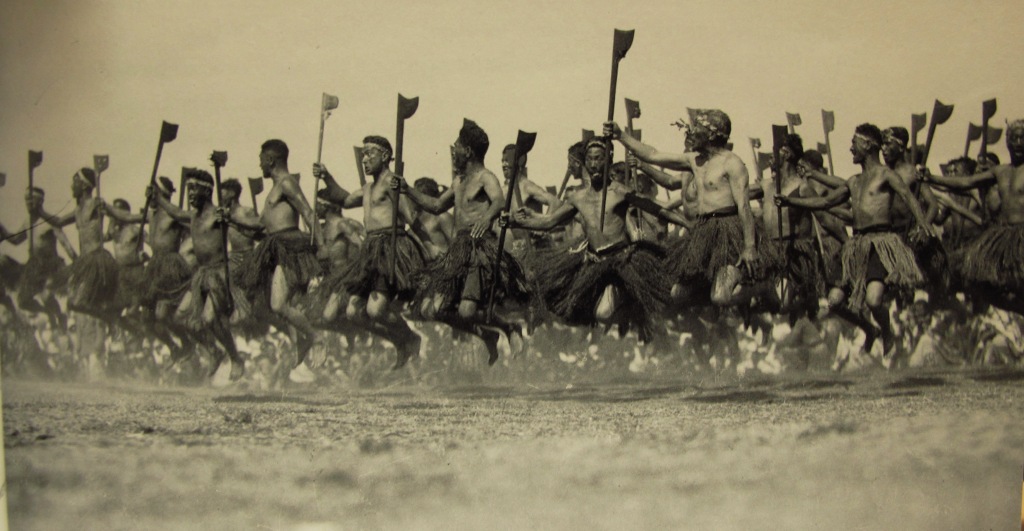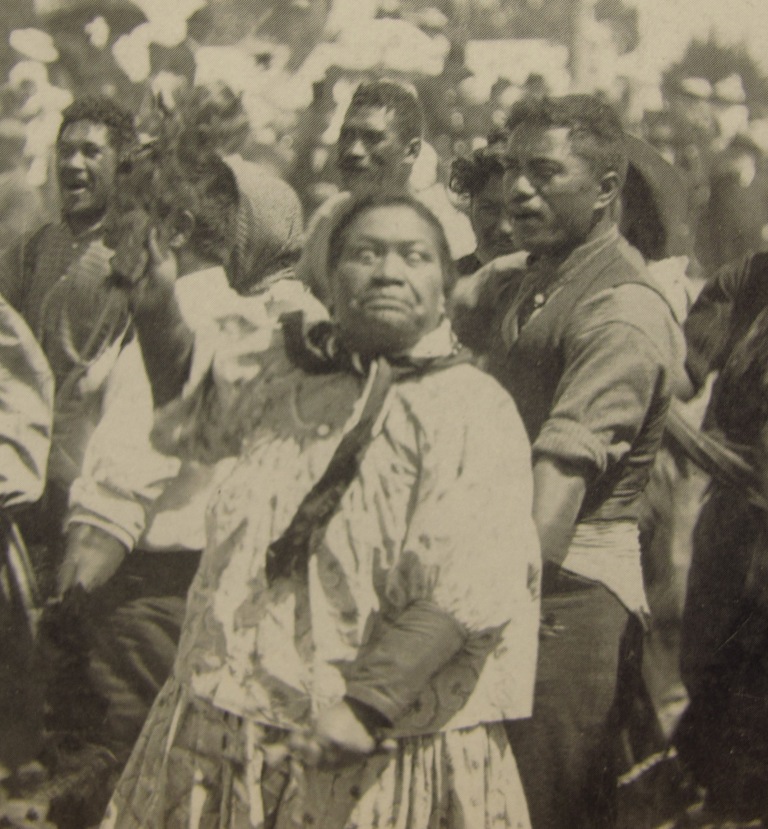The “Haka” is a typical Maori dance that is well known by the “Pakehas” (Whitemen in New Zealand), as the National rugby team the “All Blacks” uses it before each match.
Maori culture seems a bit impenetrable. There are places where you can experience Maori culture as a tourist, but otherwise it is a bit difficult to access: you know that is there, but it is difficult to experience it. It is actually similar to the gypsy culture, where the family ties are very strong and despite being constantly connected with the “Payos” (white people, spanish term), there are invisible boundaries that are not surpassed.
Here’s the same: they speak in perfect English (with a special intonation), they are in constant contact and have a good relationship with the “Pakehas” (descendants of Europeans, white people), but they have their own radio and TV channels in Maori and the tradition is experienced behind closed doors.
Different types of Haka
There are several types of “haka” with different functions: for fun, welcome ceremonies, war… Both men and women can participate. In some “haka” the coordination of movements is crucial and in others each person express freely. Currently, Maori perform the “haka” in the welcoming ceremonies in their “Marae” (Spiritual House).
War-related “haka” are called “Haka Peruperu”. Some were performed before the battle to inspect the troops and required a total coordination of the Warriors. Veteran warriors knelt and assured that the feet of all warriors were at the same height when jumping. If not, it was considered a bad omen for the battle to come.
There was other “haka Peruperu” who were used to celebrate victory in a battle or to frighten opponent.
What do the haka’s movements mean?
Each haka movement has a meaning: crossing the arms above the chest as if they were tearing it has to do with opening it and showing the heart to the enemy, displaying what is inside the warrior. Dilating the eyes in order to see them all white is called “pūkana” (a way of frightening the opponent with unreal beings) and sticking out the tongue is called “whētero” (which means “my mouth waters and I lick my lips for soon I will taste your flesh“).
Some Europeans described that even the most beautiful women became horrific during the dance. They used the word “hideous”, which the dictionary defines as “so extremely ugly as to be terrifying“.
So you know that girls, if any guy bothers you in a bar and you want to get rid of him, you have a new method: you roll the eyes back, stick out your tongue and scream “hiiiii!” (Cultural note: In Maori culture it is frown on seeing women sticking out the tongue, it is more common to pull their chin, usually tattooed, with a threatening face).
The “Ka Mate”, the “All Blacks” haka
At the beginning of each match, the “All Blacks” (New Zealand rugby national team) run one of the several existing “Haka” which is called “Ka Mate” and goes like this:
Ka Mate! Ka mate! Ka ora! Ka ora! (I will die! I will die! Or I am gonna live? Or I am gonna live?)
Ka Mate! Ka mate! Ka ora! Ka ora! (I will die! I will die! Or I am gonna live? Or I am gonna live?)
Tēnei te Tangata Pūhuruhuru (This is the Hairy man)
Nāna nei and Tiki mai Whakawhiti te Resh (who has brought the sun and has made it shine)
Ā, Upane! Ka Upane! (A step up, another step up!)
Ā, Upane, ka upane, Whiti tea Dora! (One step up, another… The sun shines!)
The origin of the “Ka Mate” is dated on 1820 when Te Rauparaha, from the Ngāti Toa, escaped from its persecutors and enemies of the Ngāti Te Aho tribe. Te Rauparaha arrived at a village on the shores of Lake Taupo where the chief of the tribe, Whareangi, hid him in a place to keep “kūmara” (sweet potatoes) and asked his wife (Te Rangikoaea) to sit on top of it.
The letter of this “Haka” reflects the thoughts of Te Rauparaha beneath the ground, first when he heard the steps of the enemies almost above him and he imagined he would die, and later when they went away and thought that he could live.
After the persecutors were gone, Te Rauparaha got out from the hideout and found himself in front of Te Whareangi (a man with hairy legs, apparently), rediscovering the sun and life. Another historian believes that “the hairy Man” could refer to the sex of Te Rangikoaea.
You can watch here the “All Blacks” performing the “Ka Mate“!
The other “Haka” that usually execute the “All Blacks” is the “Kapa O Pango“. Although spectacular, it does not have the historical background of “Ka Mate”, since it was invented in 2004 for the three nations tournament.
Cheers!
Yep Yep Yep
More “Haka”:
Video about Kapa Haka, Maori culture festival




Leave a Reply